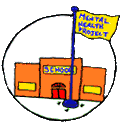

All interventions to address barriers to learning and promote healthy development must consider significant individual and group differences. In this respect, discussions of diversity and cultural competence offer some useful concerns to consider and explore. For example, the Family and Youth Services Bureau of the U.S. Department of Health and Human Services, in a 1994 document entitled A Guide to Enhancing the Cultural Competence of Runaway and Homeless Youth Programs, outlines some baseline assumptions which can be broadened to read as follows: Those who work with youngsters and their families can better meet the needs of their target population by enhancing their competence with respect to the group and its intragroup differences. Developing such competence is a dynamic, on-going process -- not a goal or outcome. That is, there is no single activity or event that will enhance such competence. In fact, use of a single activity reinforces a false sense of that the "problem is solved." Diversity training is widely viewed as important, but is not effective in isolation. Programs should avoid the "quick fix" theory of providing training without follow-up or more concrete management and programmatic changes. Hiring staff from the same background as the target population does not necessarily ensure the provision of appropriate services, especially if those staff are not in decision-making positions, or are not themselves appreciative of, or respectful to, group and intragroup differences. Establishing a process for enhancing a program's competence with respect to group and intragroup differences is an opportunity for positive organizational and individual growth. The Bureau document goes on to state that programs: are moving from the individually-focused "medical model" to a clearer understanding of the many external causes of our social problems ... why young people growing up in intergenerational poverty amidst decaying buildings and failing inner-city infrastructures are likely to respond in rage or despair. It is no longer surprising that lesbian and gay youth growing up in communities that do not acknowledge their existence might surrender to suicide in greater numbers than their peers. We are beginning to accept that social problems are indeed more often the problems of society than the individual. These changes, however, have not occurred without some resistance and backlash, nor are they universal. Racism, bigotry, sexism, religious discrimination, homophobia, and lack of sensitivity to the needs of special populations continue to affect the lives of each new generation. Powerful leaders and organizations throughout the country continue to promote the exclusion of people who are "different," resulting in the disabling by-products of hatred, fear, and unrealized potential. ... We will not move toward diversity until we promote inclusion ... Programs will not accomplish any of (their) central missions unless ... (their approach reflects) knowledge, sensitivity, and a willingness to learn. In their discussion of "The Cultural Competence Model," Mason, Benjamin, and Lewis* (1996) outline five cultural competence values which they stress are more concerned with behavior than awareness and sensitivity and should be reflected in staff attitude and practice and the organization's policy and structure. In essence, these five values are (1) Valuing Diversity -- which they suggest is a matter of framing cultural diversity as a strength in clients, line staff, administrative personnel, board membership, and volunteers. (2) Conducting Cultural Self-Assessment -- to be aware of cultural blind spots and ways in which one's values and assumptions may differ from those held by clients. (3) Understanding the Dynamics of Difference -- which they see as the ability to understand what happens when people of different cultural backgrounds interact. (4) Incorporating Cultural Knowledge -- seen as an ongoing process. (5) Adapting to Diversity -- described as modifying direct interventions and the way the organization is run so that they reflect the contextual realities of a given catchment area and the sociopolitical forces that may have shaped those who live in the area. * In Families and the Mental Health System for Children and Adolescents, edited by C.A. Heflinger & C.T. Nixon. CA: Sage Publications. Also see p. 12 for information about our Introductory Packet entitled Cultural Concerns in Addressing Barriers to Learning.
|
School Mental Health Project-UCLA WebMaster: Perry Nelson (smhp@ucla.edu) |
 |